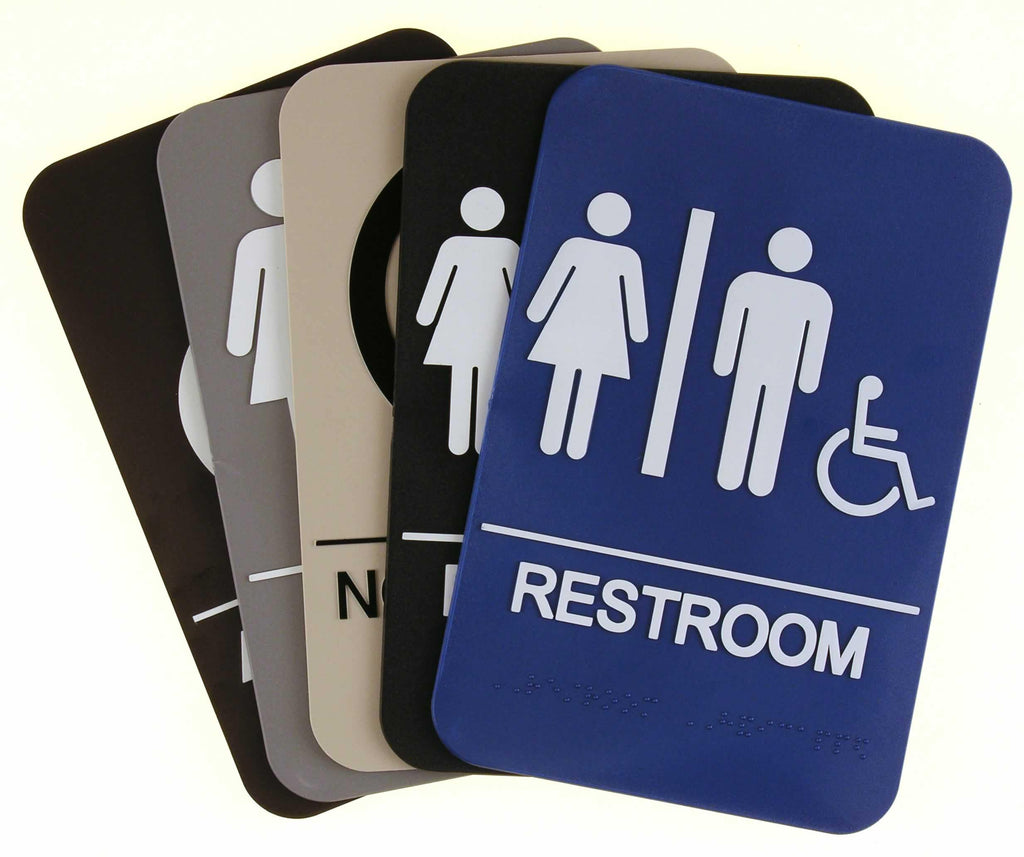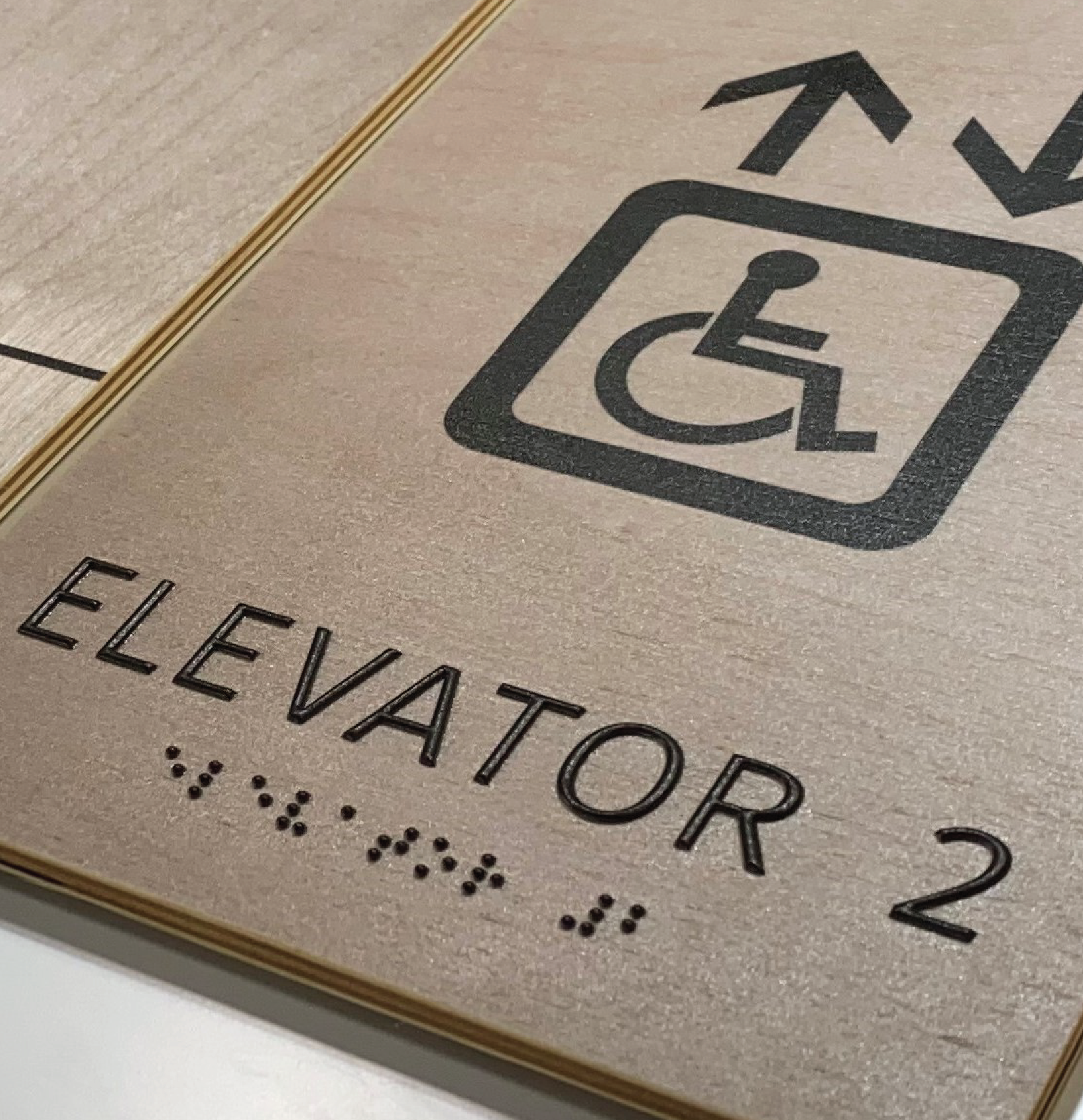A Comprehensive Guide to Choosing the Right ADA Signs
A Comprehensive Guide to Choosing the Right ADA Signs
Blog Article
ADA Signs: Making Sure Accessibility and Compliance in Public Spaces
ADA signs plays an indispensable role in assuring availability and conformity within public areas, dramatically adding to a comprehensive setting for people with specials needs. As we discover the subtleties of ADA signage, from tactile functions to develop complexities, it's important to take into consideration just how these components integrate to maintain the legal rights of all individuals.
Significance of ADA Signage
In modern culture, the relevance of ADA signage extends beyond plain conformity with legal mandates to embody a dedication to inclusivity and availability for all people. These indications are important in creating settings where people with impairments can navigate public rooms with the exact same ease and independence as those without disabilities. By giving standardized and clear information, ADA signs makes certain that everybody can access facilities, solutions, and info without barriers.
The importance of ADA signs lies in its capacity to improve the quality of life for individuals with handicaps by advertising equivalent gain access to. It gets rid of the obstacles that could otherwise hinder their ability to take part fully in neighborhood life. Additionally, these indicators work as visible indications of an organization's devotion to diversity and equal rights, showing more comprehensive societal values that promote the legal rights and self-respect of all individuals.
Furthermore, ADA signs plays an important function in public safety and security. By leading people to exits, restrooms, and other essential centers, it ensures that all people, no matter of physical capacity, can evacuate securely throughout emergencies. In summary, ADA signage is not simply a governing requirement yet a powerful tool for promoting a comprehensive and equitable culture.
Crucial Element of Conformity

Placement is vital; indicators must be set up in places that are reachable and conveniently noticeable. Commonly, signs needs to be installed between 48 and 60 inches from the ground to guarantee ease of access for both standing and wheelchair customers. Responsive aspects, such as Braille, are necessary for people with visual impairments, giving essential details in a non-visual style.
High-contrast colors in between the message and history are needed to enhance readability for people with reduced vision. The ADA mandates details comparison proportions to guarantee clarity. In addition, personality dimension is an essential consideration, with minimal height demands dictated by the watching range to ensure readability from numerous angles.
Style Considerations for Accessibility
Creating available signs needs a careful technique to ensure it fulfills the needs of all customers, especially those with specials needs. This involves taking into consideration various layout components that boost readability and usability. Secret factors consist of the selection of font style, color comparison, and responsive functions. Typefaces should be sans-serif, with easy and clear letterforms, to promote easy analysis. The size of the message is just as vital, with ADA standards recommending a minimal elevation based on seeing range to ensure legibility.
Contrasting colors in between message and history are crucial for visibility, particularly for individuals with visual disabilities. A high comparison proportion aids identify the text from its background, enhancing readability under different illumination conditions. Furthermore, responsive components, such as Braille and elevated personalities, are vital for individuals who are blind or have reduced vision. These aspects must be located at a regular height and setting to ensure easy access and understanding.
In addition, the positioning of signage plays a significant role in accessibility. Indicators must be set up in locations that are unblocked and easily reachable. Ensuring that signs is installed at appropriate elevations and angles allows all users, consisting of those utilizing wheelchairs, to interact with them efficiently.
Common Blunders to Prevent

An additional prevalent mistake is the incorrect positioning of signage. ADA guidelines define precise elevation and location demands to ensure that indications are check my site obtainable and conveniently noticeable by all individuals, including those utilizing wheelchairs. Overlooking these guidelines not just hampers availability but likewise takes the chance of non-compliance with legal criteria.
Furthermore, insufficient comparison between text and background is a constant oversight. Appropriate comparison is important for readability, specifically for people with low vision. Designers often select shades that are aesthetically enticing but lack the essential comparison, rendering the text tough to recognize.
Last but not least, some designers fail to integrate responsive aspects, such as Braille, which are critical for individuals who are blind. Omitting these features not only leads to non-compliance with ADA guidelines yet additionally limits accessibility for a sector of the populace that relies upon tactile information.
Future Trends in Signage
Developments in innovation and enhancing understanding of inclusivity are shaping the future patterns in signage design. As society becomes more conscious of diverse needs, the assimilation of clever modern technologies right into signs is getting grip. Digital signage, as an example, is evolving to include real-time updates and interactive attributes, which can be critical in giving vibrant info in public areas. These signs frequently incorporate touch displays or gesture-based controls, making it possible for individuals to navigate content customized to their certain demands. have a peek here
An additional emerging fad is the usage of augmented truth (AR) to enhance individual experience. AR-enabled signs can overlay digital details onto the physical environment, supplying visually impaired people with auditory or haptic comments. ADA Signs. This modern technology not only boosts accessibility yet likewise produces an appealing experience for all individuals
Sustainability is likewise a considerable variable influencing signage fads. Environmentally friendly products and energy-efficient lighting services are being focused find more on to straighten with global environmental objectives. Advancements in materials scientific research are leading to the advancement of even more weather-resistant and durable signs.
Final Thought
ADA signage plays an essential duty in guaranteeing ease of access and compliance within public areas by integrating responsive aspects, high-contrast shades, and critical positioning. The adherence to ADA criteria not just promotes secure navigating for people with handicaps yet additionally indicates a company's devotion to variety and inclusivity. By preventing typical errors and accepting future patterns, public spaces can continue to advance these worths, making certain that the civil liberties and self-respect of all individuals are appreciated and supported.
ADA signage plays an essential role in guaranteeing accessibility and conformity within public areas, substantially contributing to an inclusive environment for people with specials needs. As we check out the nuances of ADA signs, from responsive functions to design intricacies, it's crucial to take into consideration exactly how these aspects integrate to maintain the rights of all customers.In contemporary society, the relevance of ADA signs prolongs beyond plain compliance with lawful mandates to embody a dedication to inclusivity and ease of access for all individuals. By supplying clear and standardized info, ADA signs makes sure that everyone can access centers, services, and info without barriers.
ADA signs plays a vital duty in guaranteeing access and compliance within public rooms by incorporating responsive elements, high-contrast shades, and strategic positioning. (ADA Signs)
Report this page